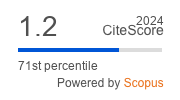The Investigation of Learning Strategies of American Learners of Chinese and Japanese for Character Learning
DOI:
https://doi.org/10.29038/eejpl.2016.3.1.taiKeywords:
Chinese as a foreign language, Japanese as a foreign language, hanzi, kanji, learning strategy.Abstract
It has been widely recognized that Chinese and Japanese languages are exceptionally difficult to learn. One of the reasons is their logographic characters (i.e. hanzi in Chinese, kanji in Japanese) that are extremely different from alphabet-based orthography (Tong & Yip, 2015; Xu & Padilla, 2013). Accordingly, there have been research investigating how L2 learners of Chinese and Japanese deal with the difficulty by exploring learners’ strategy (Gamage, 2003; Shen, 2005). However, learning strategies for a certain aspect of characters (i.e. shape, sound) have not been investigated as much as learning strategies in general (but see Shen, 2005). In addition, there are limited longitudinal research exploring how learners change their strategies. Therefore, the researchers investigate strategies that L2 learners of American university students are using most frequently for Chinese and Japanese character learning. The study had 66 L2 learners taking either Chinese or Japanese course at an American university. They took a questionnaire at the beginning and at the end of a semester. It was found that reading, context, decomposition, rote-writing, and listening were the most frequently used strategies. Moreover, the results indicated that strategies vary depending on which aspect of characters they learn. Furthermore, learners did not change their learning strategies over three months to a notable extent.
References
- Chikamatsu, N. (1996). The effects of L1 orthography on L2 word recognition: A study of
American and Chinese learners of Japanese. Studies in Second Language Acquisition, 18,
403–432. - Everson, M. E. (1998). Word recognition among learners of Chinese as a foreign language:
Investigating the relationship between naming and knowing. The Modern Language
Journal, 82, 194–204. - Everson, M. E. (2011). Best practices in teaching logographic and non-Roman writing
systems to L2 learners. Annual Review of Applied Linguistics, 31, 249–274. - Haththotuwa Gamage, G. (2003). Perceptions of kanji learning strategies: Do they differ
among Chinese character and alphabetic background learners? - Hayes, E. B. (1988). Encoding strategies used by native and non‐native readers of
Chinese Mandarin. The Modern Language Journal, 72, 188–195. - Ke, C. (1998). Effects of language background on the learning of Chinese characters
among foreign language students. Foreign Language Annals, 31, 91–102. - Liskin-Gasparro, J. (1982). ETS Oral Proficiency Testing Manual. Educational Testing
Service, Princeton, NJ. - McGinnis, S. (1999). Student goals and approaches. Mapping the course of the Chinese
language field, 151–188. - Mori, Y., Sato, K., & Shimizu, H. (2007). Japanese language students' perceptions on kanji
learning and their relationship to novel kanji word learning ability. Language
Learning, 57, 57–85. - Packard, J. L. (1990). Effects of time lag in the introduction of characters into the Chinese
language curriculum. The Modern Language Journal, 74, 167–175. - Rose, H. (2013). L2 learners' attitudes toward, and use of, mnemonic strategies when
learning Japanese kanji. The Modern Language Journal, 97, 981–992. - Shen, H. H. (2005). An investigation of Chinese-character learning strategies among nonnative speakers of Chinese. System, 33, 49–68.
- Tong, X., & Yip, J. H. Y. (2015). Cracking the Chinese character: radical sensitivity in
learners of Chinese as a foreign language and its relationship to Chinese word
reading. Reading and Writing, 28, 159–181. - Yuki, M. (2009). Kanji Learning Strategies: From the Viewpoint of Learners with Nonkanji Background. 関西外国語大学留学生別科日本語教育論集, 19, 143–150.
- Xu, Y., Chang, L. Y., & Perfetti, C. A. (2014). The Effect of Radical‐Based Grouping in
Character Learning in Chinese as a Foreign Language. The Modern Language Journal, 98,
773–793. - Xu, X., & Padilla, A. M. (2013). Using meaningful interpretation and chunking to enhance
memory: The case of Chinese character learning. Foreign Language Annals, 46, 402–422.











 Creative Commons «Attribution» 4.0
Creative Commons «Attribution» 4.0